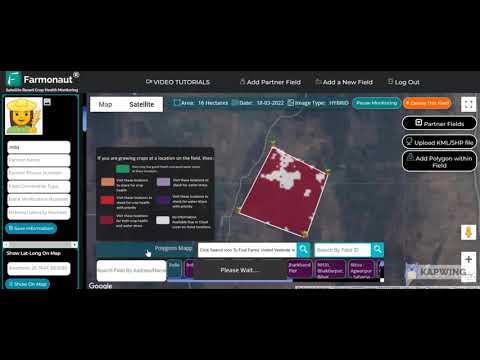Unlocking Farm Success: 7 Strategic Steps to Develop a Powerful Agricultural Vision
“77% of successful farms implement SMART goals as part of their strategic agricultural vision.”
In the ever-evolving world of agriculture, developing a successful farm vision and implementing effective farm management strategies are crucial for long-term growth. As we navigate the complexities of modern farming, it’s essential to have a clear roadmap that guides our decisions and actions. In this comprehensive guide, we’ll explore the seven strategic steps to develop a powerful agricultural vision that will drive your farm towards success.
Why a Strong Agricultural Vision Matters
Before we dive into the steps, let’s understand why having a strong agricultural vision is so important. A well-crafted vision serves as the foundation for all your farming activities. It provides direction, motivates your team, and helps you make informed decisions in the face of challenges. Whether you’re managing small farms or large agricultural operations, a clear vision can significantly impact your farm’s performance and sustainability.

The 7 Strategic Steps to Develop Your Agricultural Vision
Let’s explore the seven key steps that will help you create and implement a powerful vision for your farm:
| Strategic Step | Key Actions |
|---|---|
| 1. Define Your Farm’s Purpose | • Conduct SWOT analysis • Identify core values • Articulate mission statement |
| 2. Set SMART Goals | • Establish specific, measurable objectives • Align goals with farm capabilities • Set realistic timelines |
| 3. Engage Employees | • Share vision with team • Encourage input and feedback • Assign roles and responsibilities |
| 4. Align with Market Trends | • Research industry developments • Identify potential opportunities • Adapt to consumer preferences |
| 5. Implement Vision Strategies | • Develop action plans • Allocate resources effectively • Establish performance metrics |
| 6. Monitor Progress | • Schedule regular vision meetings • Track key performance indicators • Adjust strategies as needed |
| 7. Adapt and Refine | • Conduct periodic vision reviews • Embrace innovation and technology • Stay flexible to market changes |
Step 1: Define Your Farm’s Purpose
The first step in developing a powerful agricultural vision is to clearly define your farm’s purpose. This involves conducting a thorough SWOT (Strengths, Weaknesses, Opportunities, Threats) analysis of your operation. By understanding these elements, you can better position your farm for success.
- Identify core values: What principles guide your farming practices? Are you focused on sustainability, innovation, or traditional methods?
- Articulate mission statement: Craft a concise statement that captures the essence of your farm’s purpose and goals.
For example, your mission might be: “To produce high-quality, sustainable crops while preserving the land for future generations.” This clear purpose will guide all your future decisions and strategies.
Step 2: Set SMART Goals for Your Farm
Once you have a clear purpose, it’s time to set SMART (Specific, Measurable, Achievable, Relevant, Time-bound) goals. These goals will form the backbone of your agricultural strategic plan.
- Specific: Instead of “increase crop yield,” aim for “increase corn yield by 15% within two years.”
- Measurable: Use concrete numbers and percentages to track progress.
- Achievable: Set realistic goals based on your farm’s capabilities and resources.
- Relevant: Ensure each goal aligns with your overall farm vision.
- Time-bound: Set clear deadlines for achieving each goal.
By implementing SMART goals, you create a roadmap for success that keeps your team focused and motivated.
Step 3: Engage Your Farm Team
“Regular vision meetings can increase farm productivity by up to 25% through improved team alignment.”
Your farm vision isn’t just for you; it’s for your entire team. Engaging your employees in the vision process is crucial for successful implementation.
- Share the vision: Communicate your farm’s vision and goals clearly to all staff members.
- Encourage input: Ask for feedback and suggestions from your team. They may have valuable insights you haven’t considered.
- Assign roles: Give each team member specific responsibilities that align with the vision.
Remember, an engaged team is more likely to work towards common goals and contribute to the farm’s success.
Step 4: Align Your Vision with Market Trends
A successful farm vision must take into account current and future market trends. Stay informed about industry developments and consumer preferences to ensure your vision remains relevant.
- Research industry trends: Keep up with the latest agricultural technologies and practices.
- Identify opportunities: Look for gaps in the market that your farm could fill.
- Adapt to consumer demands: Consider shifting towards organic farming or sustainable practices if that’s what your market demands.
By aligning your vision with market trends, you position your farm for long-term success and growth.

Step 5: Implement Vision Strategies
With your vision and goals in place, it’s time to develop and implement strategies to achieve them. This step is where your agricultural strategic plan comes to life.
- Develop action plans: Break down your goals into specific, actionable steps.
- Allocate resources: Ensure you have the necessary resources (financial, human, technological) to support your strategies.
- Establish metrics: Define key performance indicators (KPIs) to measure progress towards your goals.
Remember, effective implementation is key to turning your vision into reality. Be prepared to adjust your strategies as you go along.
Step 6: Monitor Progress and Track Performance
Regularly monitoring your farm’s progress is crucial for maintaining momentum and staying on track with your vision.
- Schedule vision meetings: Hold regular meetings to discuss progress, challenges, and opportunities.
- Track KPIs: Use tools like Farmonaut’s satellite-based farm management solutions to monitor crop health and farm performance.
- Adjust as needed: Be prepared to make changes to your strategies based on performance data.
By consistently tracking your farm’s performance, you can identify areas for improvement and celebrate successes along the way.
Step 7: Adapt and Refine Your Vision
The agricultural landscape is constantly changing, and your farm vision should evolve with it. Regular refinement ensures your vision remains relevant and effective.
- Conduct vision reviews: Annually assess your vision and goals, making adjustments as necessary.
- Embrace innovation: Stay open to new technologies and farming methods that could enhance your operations.
- Remain flexible: Be prepared to pivot your strategies in response to market changes or unexpected challenges.
A flexible, adaptable vision is key to long-term farm success in an ever-changing agricultural landscape.
Leveraging Technology for Vision Implementation
In today’s digital age, technology plays a crucial role in implementing and achieving your farm vision. Tools like Farmonaut can significantly enhance your farm management strategies and help you reach your goals more efficiently.
Farmonaut’s satellite-based farm management solutions offer:
- Real-time crop health monitoring: Make informed decisions about irrigation, fertilizer usage, and pest management.
- AI-based advisory systems: Receive personalized recommendations for optimal farm management.
- Weather forecasting: Plan your farming activities with accurate weather predictions.
- Resource management tools: Optimize your use of water, fertilizers, and other resources.
By integrating these technologies into your farm management strategies, you can improve operational efficiency and drive towards your vision more effectively.
Overcoming Challenges in Vision Implementation
Implementing a farm vision is not without its challenges. Here are some common obstacles you might face and strategies to overcome them:
- Resistance to change: Some team members may be hesitant to adopt new practices. Address this by clearly communicating the benefits of the vision and involving them in the decision-making process.
- Limited resources: Prioritize your goals and focus on those that will have the most significant impact. Consider seeking partnerships or grants to support your vision.
- Market volatility: Stay informed about market trends and be prepared to adjust your strategies. Diversification can help mitigate risks associated with market fluctuations.
- Weather uncertainties: Utilize tools like Farmonaut’s weather forecasting features to make informed decisions and mitigate weather-related risks.
Remember, challenges are opportunities for growth and innovation. By addressing them head-on, you can strengthen your farm’s resilience and move closer to achieving your vision.
The Role of Continuous Learning in Farm Vision Development
Developing and implementing a powerful agricultural vision is an ongoing process that requires continuous learning and adaptation. Stay informed about the latest agricultural practices, technologies, and market trends to keep your vision relevant and effective.
- Attend agricultural conferences and workshops
- Participate in farmer networks and forums
- Engage with agricultural experts and consultants
- Experiment with new farming techniques on a small scale
By fostering a culture of continuous learning on your farm, you’ll be better equipped to adapt to changes and seize new opportunities as they arise.
Measuring the Impact of Your Farm Vision
To ensure your agricultural vision is truly driving success, it’s essential to regularly measure its impact. Here are some key areas to focus on:
- Productivity metrics: Track changes in crop yields, livestock production, or other relevant output measures.
- Financial performance: Monitor revenue growth, profit margins, and return on investment.
- Sustainability indicators: Assess improvements in soil health, water usage efficiency, and overall environmental impact.
- Employee satisfaction: Conduct regular surveys to gauge team morale and engagement levels.
- Market position: Evaluate your farm’s standing in the market compared to competitors.
By regularly assessing these areas, you can gauge the effectiveness of your vision and make data-driven decisions to refine your strategies.
Communicating Your Farm Vision to Stakeholders
A powerful agricultural vision isn’t just for internal use; it’s also a tool for engaging with external stakeholders. Effectively communicating your vision can help you:
- Attract investors or secure loans by demonstrating a clear plan for growth and sustainability
- Build stronger relationships with customers by showcasing your commitment to quality and values
- Engage with the local community by highlighting your farm’s positive impact on the area
- Collaborate with other farmers or agribusinesses on shared goals or initiatives
Consider creating a concise “vision statement” that captures the essence of your farm’s goals and values. This can be used in marketing materials, on your website, or in discussions with potential partners or customers.
Leveraging Digital Tools for Vision Implementation
In today’s digital age, numerous tools can support the implementation of your farm vision. Farmonaut offers a range of solutions to enhance your farm management strategies:
- Mobile apps: Access critical farm data on-the-go, enabling quick decision-making in the field.
- Web application: Gain comprehensive insights into your farm’s performance through detailed analytics and reporting.
- API integration: For larger operations, Farmonaut’s API allows seamless integration with existing farm management systems. Check out the API Developer Docs for more information.
By incorporating these digital tools into your farm management strategies, you can streamline operations, improve decision-making, and move closer to achieving your vision.
Conclusion: Embracing Your Agricultural Vision
Developing a powerful agricultural vision is a journey that requires dedication, flexibility, and continuous improvement. By following these seven strategic steps and leveraging innovative tools like Farmonaut, you can create a vision that not only guides your farm’s growth but also contributes to a more sustainable and productive agricultural future.
Remember, your vision is the compass that will guide your farm through challenges and towards success. Embrace it, share it with your team, and let it inspire every decision you make. With a clear vision and the right strategies in place, your farm can thrive in the ever-changing landscape of modern agriculture.
FAQs
- Q: How often should I review and update my farm vision?
A: It’s recommended to conduct a thorough review of your farm vision annually. However, you should also be prepared to make adjustments throughout the year in response to significant changes in the market or your operation. - Q: Can small farms benefit from developing a comprehensive vision?
A: Absolutely! A clear vision can help farms of all sizes focus their efforts, make better decisions, and achieve sustainable growth. - Q: How can I ensure my team stays aligned with our farm vision?
A: Regular communication is key. Hold frequent team meetings to discuss the vision, celebrate progress, and address any challenges. Encourage open dialogue and feedback from all team members. - Q: What role does technology play in implementing a farm vision?
A: Technology can significantly enhance vision implementation by providing real-time data, improving decision-making, and increasing operational efficiency. Tools like Farmonaut’s satellite-based solutions can be invaluable in this process. - Q: How can I measure the success of my farm vision?
A: Define clear, measurable KPIs aligned with your vision goals. These might include productivity metrics, financial performance indicators, sustainability measures, and employee satisfaction scores.
Farmonaut Subscriptions






